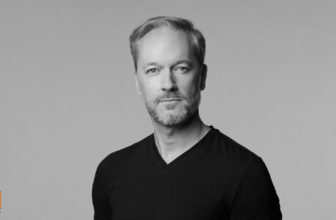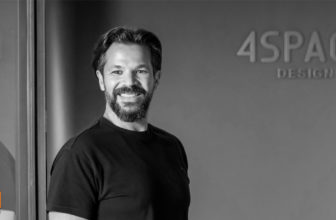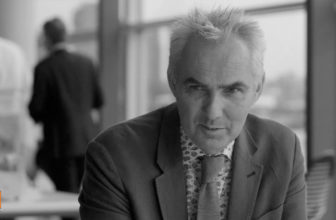Mitchell Joachim, Ph.D., Assoc. AIA, [jo-ak-um] – Co-Founder of Terreform ONE and an Associate Professor at NYU. He was formerly an architect at Gehry Partners LLP, and Pei Cobb Freed. He has been awarded a Fulbright Scholarship and fellowships with TED, Moshe Safdie, and Martin Society for Sustainability, MIT. He was chosen by Wired magazine for “The Smart List: 15 People the Next President Should Listen To”. Rolling Stone magazine honored Mitchell in “The 100 People Who Are Changing America”. Mitchell won many awards including; AIA New York Urban Design Merit Award, Victor Papanek Social Design Award, Zumtobel Award for Sustainability, Architizer A+ Award, History Channel Infiniti Award for the City of the Future, and Time Magazine Best Invention with MIT Smart Cities Car. Dwell magazine featured him as “The NOW 99” in 2012. He co-authored three books, “XXL-XS: New Directions in Ecological Design,” “Super Cells: Building with Biology,” and “Global Design: Elsewhere Envisioned”. His work has been exhibited at MoMA and the Venice Biennale. He earned a Ph.D. at Massachusetts Institute of Technology, MAUD Harvard University, MArch Columbia University. Most recently, Terreform ONE was honored by the LafargeHolcim Foundation by receiving a 2017 Acknowledgment Award for Sustainable Construction for the Circket Shelter + Modular Insect Farm.
Zack Saunders (founder of ARCH[or]studio and Arch2O contributing editor) and Mitchell Joachim share thoughts on heroic feats of architecture, the distinction between a ‘Jaws’ problem and a ‘Piranha’ problem, building cities from scratch and the future of Terreform ONE. The following is an excerpt from a piece included in his forthcoming book: “Design with Life: Biotech Architecture and Resilient Cities”, co-edited with Maria Aiolova.
Cricket Shelter. Modular Edible Insect Farm. In an advanced economic setting, this farm can introduce a sophisticated and ultra- sanitary method of locally harvesting insects for the production of cricket flour in fine cuisine recipes. Terreform ONE. Sponsored by Art Works for Change.
ZS: I can recall when I was an undergraduate student, architects would come and give talks about their buildings, our professors would show us important projects by important architects … but it wasn’t until I stumbled upon the work of architects like John Hejduk or Lebbeus Woods, that my mind really began to open and my conception of what architecture has began to broaden. As a matter of fact, your now infamous wall section of the ‘meat house’ wasn’t lost on me either at the time. I can imagine many architects today harbor similar notions about Zaha Hadid or Frank Gehry.
MJ: Gehry is definitely an American hero in my eyes, you name it he’s done it. At the same time, the Zaha figure, the Gehry figure are models of the past … architects are so fascinated with ego, ownership, innovation … we tend to operate in a way that is very different from that of the sciences where they actually work in canon. If you are a scientist and you plan to present something that is entirely new or overturn a principle that is generally accepted, you had better have some serious evidence to back up your claims. In architecture school, if a student were to copy Frank Gehry’s Concert Hall down to the last detail, except they focused in on specific structural connections with the aim of improving the structural system as a whole, they wouldn’t last 2 minutes in a pin-up before they were berated by the faculty. When you get out of school and have practiced for a while, you realize that it’s almost all about that ‘2%’. Heroic feats of architecture do something novel with that ‘2%’.
In Vitro Meat Habitat. An architectural proposal for the fabrication of 3D printed extruded pig cells to form real organic dwellings. It is intended to be a “victimless shelter”, because no sentient being was harmed in the laboratory growth of the skin. Terreform ONE.
I hear that more and more … the idea of the signature architect, or figure-head, being a model of the past. And yet, such ‘solitary genius’ may be necessary to inspire individuals to act, to do something novel and important. Ego, ownership, and innovation all contribute to ones’ identity … the relationship between the figure-head architect and their followers might just be analogous to that of the studio or group and its members. Individual signature is the same as group identity in this sense. Except perhaps when the individual dies, the snake is just a headless corpse …
Archigram, a group that inspired Terreform ONE, was (and still is) quite successful as a league of individuals with various ideas … Peter Cook with his plug-in city, Ron Herron with one that walks … The snake euphemism doesn’t hold here. A multi-headed hydra seems more accurate … The signature does exist at the group level, sure, but the hydra doesn’t die when it loses a head. In fact, it probably multiplies. The lead designer for Bilbao worked in Gehry’s office for two decades, then struck out on his own and opened his own office … sadly, nobody cares. At the same time, Rem is very supportive of his ‘children’, the signature individual supports a kind of lineage in this way.
I did an internship at Peter Cook’s Crab Studio in London a few years ago. It was wholly a good experience for me as a young designer, in fact I was still a student at the time … Peter, and the studio’s co-founder Gavin Robotham, are very hands-on and run the place less like an office and more like a studio. Even still, there were numerous times when, mostly in their absence, I sensed that fellow designers were producing not necessarily architecture but their concept of the kind of architecture that Peter and Gavin might do, or want done … in this way, pedagogy becomes style or even fashion in the professional one. With your example of Rem or mine of Peter, the figurehead takes the role of a nurturer, rather than a kind of authoritarian figure, yet a particular pedagogy is still propagated by virtue of the desire to please by those that work for them or associate with them …
We have actually been so interested in pedagogy in schools in particular that we’ve been working on a 5-year study on the subject. We have also been looking extensively on the ranking systems in architecture schools. What does it mean to receive a high rank? What makes a good school of architecture? Why don’t we build a customized ranking system for people that want to study architecture, one that is totally geared towards the students’ interests and preferences? A prospective student could fill out a survey that could help narrow the options down which might clarify whether they would do well in a school like Sci-Arc, or Princeton, and so forth. I once watched a TED talk where the speaker illustrated how a researcher revolutionized the tomato sauce industry by not looking for the perfect sauce, singular, but by providing a multitude of options for people to chose from (1).
At the same time, I would hope the ‘answer’ to such a survey would not be so straight-forward, in the style of Douglas Adams, something like ’42’ (laughter) … because the college experience is a bit about delving into the unknown, finding yourself, and all that comes with that …
(Laughter) Yes, of course.
Homeway. The Great Suburban Exodus. A proposal to put our future American dwellings on wheels; these retrofitted houses will flock towards downtown city cores and back. We propose to reinforce our existing highways between cities with an intelligent renewable infrastructure. In the future, the physical home will remain permanent but its location will be transient. Terreform ONE.
Speaking of TED talks, variety and choice, I recall one where the speaker uses the plethora of choices available when shopping for jeans, and his own experience with not finding the ‘perfect pair’, as an example of how too much variety might actually lead to disappointment with one’s choice due to the increased expectations one has about how good those options will be (2) … he even argues that a kind of paralysis might ensue whereby a choice is not even made at all due to the overwhelming number of choices.
I can definitely see the correlation between the jeans example and make the right choice when it comes to selecting an architecture school. Gladly, one is a bit more complex than the other! When you go to architecture school, you’re trained to be a leader, not just a consumer of goods or a follower of trends. Malcolm Gladwell was his name … the spaghetti sauce guy. The main idea I wanted to illustrate with that example is that customization, rendered possible by a larger selection of distinct and therefore different sauces, for instance, might be a concept that architecture schools could benefit from, rather than all offering basically the same thing.
I see mature designers presenting their work in its finished state, I see Mitchell Joachim on TED, for instance, talking about his projects and showing refined drawings, visions, and structures … but I don’t see the struggle, the choices, the hours of work and research that went into making, say, the ‘meat house’, possible … I wonder how much of that is taught, how much of it is ‘ego, ownership and innovation’ on the part of the designer, and how much is just sheer will not to quit … I think the question is a pressing one because I am not wholly convinced that teaching architecture is even possible …
Plug-in Ecology. Urban Farm Pod with Agronomy. A prototype for a “living” cabin for individuals and urban nuclear families to grow and provide for their daily vegetable needs. The Plug-In Ecology cabin sphere uses a robotic milled rotegrity ball for the under-grid structure made of reclaimed flat packed materials. A fully operable sub irrigation system and a shaped foam panels serve as sleeves for the potting elements and agronomy tissue culture for micropropagation. A digital monitoring platform relays information about specific plant health to the web.Terreform ONE. Consultants: Huy Buy, Greyshed. Photos: Micaela Rossato.
I strongly believe that there isn’t just one way to do or teach architecture. Let me be very clear here, I believe that the educational system should be structured in two tracks. The first should offer an education in Building Science where a student graduates in 4 years and, with at least one year of internship in the field, they get licensed and go out in the world and design buildings. The second is a Ph.D. track, which has its equivalent in the fields of Science, Mathematics, and History, these students would spend 7 years or more going down rabbit-holes, in studios surrounded by other students making things, with the aim of making original contributions to human knowledge. Can you teach someone who should be in one of these realms how to think like someone in the other? Probably not … and that’s OK. The hardest thing to do is always to find the question! But yes, the struggle is always there, the research and effort behind the scenes is fundamental to any project that isn’t total garbage, but we don’t always have to present that part of it to the world. Sheer will to keep going is absolutely a necessity if you’re going to do anything creative. And I guess I get ego points as well for breaking off and forming Terreform ONE with Maria Aiolova!
Terreform ONE is thinking not only in terms of new chapters of itself as a group or collective but rather as a part of a larger societal and global exchange. We decided to go outside the bounds of what a design studio normally does: we went non-profit, we created our own school, we run our own competitions, we work with novel materials and conduct intensive research, we work with topics that require extensive expertise … Why? Because, why not? A major driving force behind our initiatives is that we question authority, question the status quo, in order to promote smart design in cities and construct new visions of what the city of the future could be. In fact, we are beginning to grow in unexpected ways because of this.
Urbaneering Brooklyn 2110. City of the Future. We have designed an intensified version of Brooklyn that supplies all vital needs for its population inside its accessible physical borders. In this city, food, water, air, energy, waste, mobility, and shelter are radically restructured to support life in every form. Terreform ONE.
And yet, for at least the past five years, population growth in America’s suburbs has accelerated while slowing in urban centers (3) … it seems the city as a project is dead, or at least on hold until further notice …
Terreform X will be launching soon as an extension of Terreform ONE in the form of a private company. We are working on a large-scale concept for an actual city, which we are very excited about. We were approached by a CEO of a major corporation and Preet Bharara, the former New York District Attorney, who wanted to meet and ‘chat’, literally that’s what they said, we had no stated agenda for our meeting. After chatting for a bit he says ‘we are planning to build a city’. Basic premises such as proximity to a body of water hadn’t crossed their minds … name one major city that is not either located on the coast or near a river … but we are so disconnected in our thinking toward our relationship to nature that this was not first on the list until we brought it up. Anyway, their idea is that inhabitants will get paid $80,000 or so a year to live there, and people will work because they want to. How will they avoid people moving there to leech off the system I don’t know, I’m sure there will need to be some sort of application process … the Tragedy of the Commons is something to keep in mind. But the idea of envisioning a city that can embody the principles of environmentally conscious design with local sustainability in energy, transportation, buildings, waste treatment, how you produce your food, where you get your water … all concepts that we have been working with and studying since Terreform ONE was founded, is very appealing to us.
It almost seems like less of an architectural problem per se and more of a social or even philosophical one … it sounds like you wouldn’t just be building a city but would be constructing an entire society, literally from the ground-up …
Exactly. I visited the recent Frank Lloyd Wright exhibit at the MoMA … I’m not sure what came over me at the sight of his drawings for Broadacre City, but there is so much thought in those drawings which were once laughed off as a flight of fancy … towers in the middle of nowhere, surrounded by orchards and farms, drones flying around. It really makes me think that the Suburbs might be another paradigm to consider in urban morphology that we really aren’t looking at seriously today. But yes you are making a society. And I think most architects, whether advertently or inadvertently, insert their world-view in their architectural works …
Butterfly House. A monarch butterfly habitat nestled in a dense urban environment. Exterior and interior views and stages of metamorphosis. Terreform ONE.
We are working on something that I don’t believe has ever been done before … like finding a new territory that has yet to be explored. The project spiraled off from of our research into caddisflies and their underwater constructions; they really are a kind of architect of their own habitats, the larvae construct protective cases using detritus bonded together by silk. Could we retrain them to find microplastics and other debris in the environment and use that specific material in their cases? Anyway, we’re working on a building facade in New York and this work with insects has trickled into the project. We decided to research an insect that would make sense in such a dense urban environment and we stumbled upon the monarch butterfly, a native species to Canada and New England. Slowly over time, due to human activities namely, the species has slowly declined. The facade we are proposing is not simply a skin to the building but rather a spatial enclosure, consisting of a tempered environment to house and nourish butterflies; a kind of vertical meadow filled with monarchs right in the heart of New York! Designed to be super-attenuated, noise canceling and conducive to the necessary environmental conditions for habitation, the Butterfly House will also act as a kind of ecological and environmental indicator of wellness for the local environs as well; the thinking here is if it’s good enough for butterflies to flourish it’s good enough for humans.
I was watching ‘Jaws’ the other day, and most of the movie is concerned not with fighting the shark itself, but rather trying to convince the community that the work of fighting the shark needs to be done in the first place. Thinking of your work at Terreform ONE I can’t help but wonder how much of it is trying to convince the mayor of Amity that there is, in fact, a problem?
‘Jaws’ is a great example because there is a palpable beast that you can see, in the form of course of the shark … you are able to identify as a threat the moment it begins eating people. I actually just saw the movie ‘Piranha’, which is a very shitty film compared to ‘Jaws’, but here fighting one fish becomes less of a task than fighting a swarm … in the film there is massive death, explosions everywhere, it’s a mess. We really don’t have a Jaws problem, we have a Piranha problem. Paul Kingsworth and Timothy Morton have been talking about it as a kind of Dark Ecology. Kingsworth is saying, in effect, saving the world is hopeless, it’s too late to save it anyway. Morton describes the concept as an ouroboran one, speaking of it in relation to Deckard from ‘Bladerunner’, who must cope with the realization that he is one and the same with the enemy he is pursuing … in this sense, Chief Brody would have to realize that he is the shark! Morton’s ideas, which are influencing architects more and more today, of dark ecology, hyperobjects, the end of nature, provide a refreshing new look at notions of ecology and even design, and his writings are very accessible. He speaks of hyperbodies for instance as a kind of embodied presence greater than each individual part. Cities are great examples of this, and architects are starting to learn how to engage these concepts.
It seems where Morton talks about human kind being interconnected with all living and non-living things it has a sense of hopefulness that we might shine a light on the darkness, so to speak, awaken to the truth of the universe, and ultimately rethink our relationship with the world. I see your work as being closely aligned with this philosophy. Kingsworth, on the other hand, writes of a less utopic vision of the future, stating that nothing can stop the impending and ongoing crisis “barring some kind of reset: the kind that we have seen many times before in human history. Some kind of fall back down to a lower level of civilizational complexity. (4)” While this seems dismal and disheartening at first, these moments he is speaking of are responsible for spawning some of the most important moments of human history, and carried us from the Dark Ages to the Renaissance, from a medieval world to an enlightened one, and so on.
Major movements, periods where societies emerge from darkness into an age of enlightenment in one form or another, are part of our history for sure. But when you are at the moment, you can’t see it for what it is. People are calling this the ‘Age of Disruption’, perhaps disruption is necessary for change, but it sounds a bit disappointing …
Post Carbon City-State. Rezoned Circular Economy. New York City’s sea level rise is projected to reach a high estimate of 11 inches by the 2020s and 31 inches by the 2050s. We imagine the void that was once Manhattan as an algae production plant for sequestering carbon and supplying amino acids for food production and biomass for energy generation capable of reformative growth. What were once streets become snaking arteries of livable spaces, embedded with renewable energy sources, low-tech, green vehicles for mobility and productive nutrient zones. Terreform ONE. Consultant: Pablo Berger. Photos: Micaela Rossato.
‘You recently were involved in a debate for the Seoul Biennale where you talked of the set-backs often faced by environmentally conscious design and the role played by major corporations in this, something about their artificial support … ‘
Predatory delay, yes. When we first started out, it was impossible to define who we were fighting, particularly when companies like Shell and BP are giving lip-service to renewable energy and even contributing money towards research. Day to day these companies are making incredible profits, so the answer becomes ‘sure, 20 years from now we’ll change, but today? It’s business as usual. So basically the Piranha problem isn’t just a swarm of identical fish coming at you, its a swarm of individually different kinds of problems …
You have to be quite agile, even …
You have to be resilient!
Resilient Waterfront. An investigation of adaptive reuse of former military vessels to create a riparian buffer zone that deals with issues of surges and flood management in New York Harbor. The goal is to combine the natural sedimentation techniques with the recycling of retired U.S. Naval ships to restore the natural water edge, to reinstate a diversified profile and to slow down the watercourse. This comprehensive model of the reimagined water front is based on one simple premise- instead of keeping the water out, the infrastructure is designed to let the water in. Terreform ONE.
END NOTES:
- Malcolm Gladwell. ‘Choice, happiness and spaghetti sauce’. TED.
- Barry Schwartz. ‘The paradox of choice’. TED.
- US Census Bureau
- Kingsworth, Paul. ‘Dark Ecology’.





